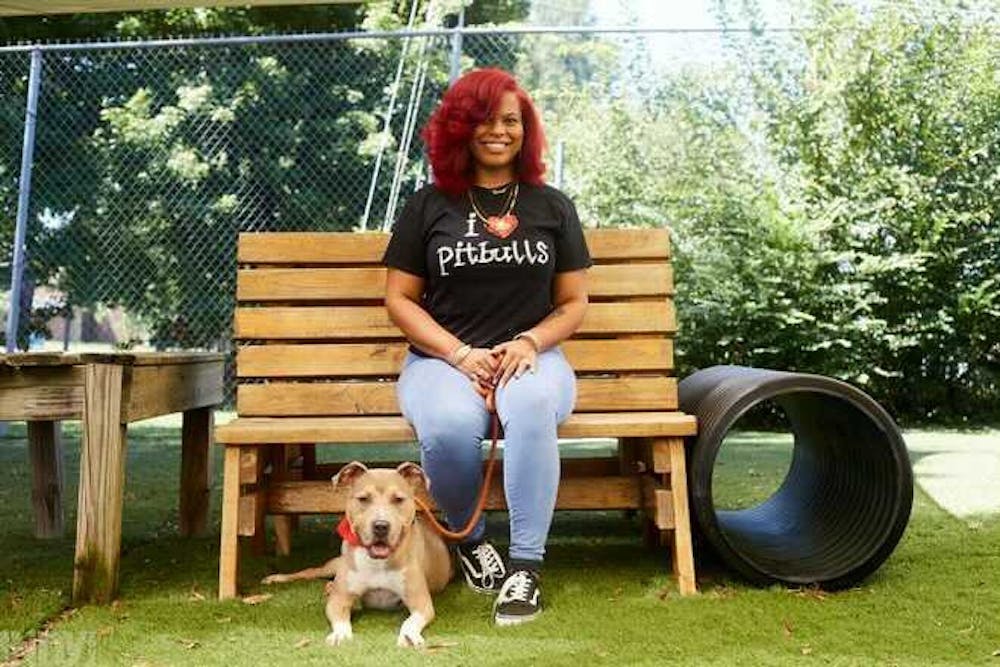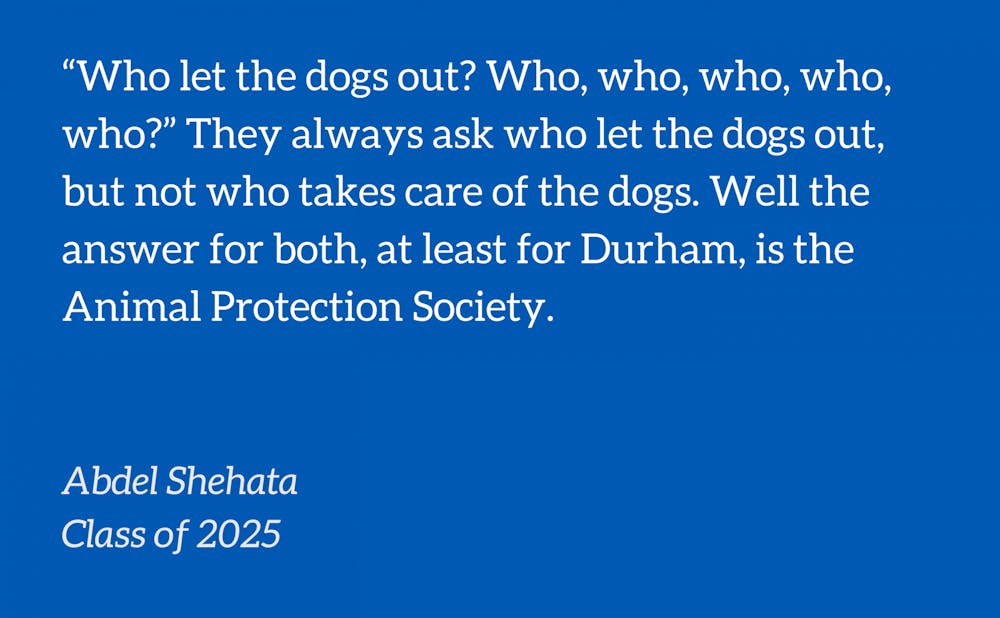“Who let the dogs out? Who, who, who, who, who?” They always ask who let the dogs out, but not who takes care of the dogs. Well the answer for both, at least for Durham, is the Animal Protection Society. The APS not only lets dogs out to responsible owners but also cats, bunnies, hamsters, chickens, and many other animals. APS is also our destination for our first Day of Service.
Mask in hand, and APS shirt donned, I put my key in ignition and drove away. 12 minutes later, I was finally at APS. I got out of my car and entered through the play yard into the APS building, where my nose was assaulted by the potent smell of animals. Nonetheless, I wasn’t deterred, for I was so close to accomplishing my first task: signing in. 30 seconds later, I reached the sign-in laptop, where I signed in and said hi to Larissa.
I then proceeded to the first cat room, where I would spend my next two hours. There I met a nice staff member, who gave me my next task: to clean two cages normally, and to perform the onerous assignment of “deep cleaning” one cage. At first, I was lost because I haven’t volunteered with cats in about four scores; however, with the guidance and help of the kind staff member I was able to start on my task.
The first cage went splendidly, and by splendidly I mean that my hands didn’t get martyred by cat claws yet. As I cleaned, I learned that cleaning is a precise art. Before we proceed into the steps, make sure you are wearing gloves:
1. Close off half the cage, and keep the cat in the other half
2. throw away the litter box in the trash: the box goes in the trash bag, the litter goes into the trash can.
3.Use the wet towels with cleaning products to wipe out the cage.
4. Wait until the cage dries out, and then put the towel in with the new litter box.
5. Get the cat into the clean side,
6.Repeat the same procedure to the other half of the cage with some differences: replacing their play box and toys if they are dirty.
6. Fill up the water and food bowls.
For Larissa Chantell, APS volunteer manager, this all in a day's work. Her connection, dedication, and knowledge with regards to APS inspired me throughout our conversation.

Larissa Chantell with her pit bull.
Tell us more about your background and how you got involved with APS?
So basically, I've always had a love for animals. I moved here with my mom when I was about eight or nine from Florida. And our weekend activity to do was to come, come to the shelter and walk around and look at the animals. So I would say that I started with APS when I was like nine, just because I was familiarized with them. They had a listing back in 2016 on Craigslist for a job. And I applied to be a customer service representative that actually happened to be an adoption counselor.
What have you found to be the most rewarding part of working here?
The most rewarding part would just be making a difference. I am the volunteer manager and the rescue manager as well. So I work with our animals that we're not able to place in our adoption program due to maybe behavior concerns or medical issues. So those are animals that I find placement for. And if I don't find placement, then I wouldn't be able to place them anywhere. So those are really like our high risk animals. Last year, I placed 365 rescue animals.
What part have you found to be the most difficult part?
Not adopting all of them. That's the hardest thing. People always ask, how do I do my job because they're such animal lovers and they want to take all of them home. And I say that, that is honestly the hardest part. At home right now I have a dog and a cat. So I'm at my limit, which kind of helps me. But that's the hardest thing, not just taking all of them home.
Get The Chronicle straight to your inbox
Sign up for our weekly newsletter. Cancel at any time.
Can you tell us about the different types of roles employees and volunteers have in APS?
So, um, staff roles, we have our front desk staff. Those are our adoption counselors. They adopt out our animals and take our animals. They run different little programs that we do to help with the community, like our span neuter program. We have a medical department where we have a full vet on staff, Dr. Bishop, we have vet techs as well that assist her with taking care of all the animals. Medically here, we have a behavior staff or a team or department, which is our behavior manager and her assistant. They evaluate all the animals that we have come in in the shelters to make sure they're behaviorally sound.
We have me, the volunteer manager. I oversee our volunteers and the rescue department. We also have our development department as well. They manage fundraising and our donors as well. And our social media team. Our volunteers are amazing. They help with any and everything we need help with. We have dog walkers, of course, people that come in and socialize cats. We have people that transport animals. We have volunteers that help us with events. We have volunteers that foster our animals. It just varies. We have a lot of roles. Those are some of them.
So how did the APS fare through COVID?
COVID kind of made us change our whole process of how we do things. We switched over when COVID first hit: everything was done virtually. So we had virtual adoptions, virtual visits. We moved all of our dogs that we could, that were available into foster homes. So our foster program grew as well. We currently have almost 250 animals in foster care.So we just changed it. It made us change our ways a lot, a lot.
Before we didn't have an option to do anything virtually like do adoption contracts or anything. So we switched gears and now we're able to, so we kind of came to the 21st century.
Is there any advice you'd like to give someone who wants to be involved, like working with animals?
I would just be honest with people and say that it is hard, but it is very rewarding. The reward kind of trumps all of the sadness that people think about when they volunteer. So just understanding that it is difficult, but worth the reward.
Do you have a favorite adoption story?
My favorite adoption story would be my own. I adopted my dog from here. His year anniversary just came up. I adopted him on 9/11 last year. He was actually here for about a year before being adopted. He was on a court case hold:so he was a cruelty case. So when he came in, he was a full-grown pit bull and weighed only like 35 pounds. So he was just skin and bones.
He is now a 72 pound healthy pit, and he's amazing. He just changed my life and he was just sitting here the whole time, right. Under my nose. So yeah, he's mine: he's my adoption story.
As much as I wanted to take an animal home on my Day of Service, I wasn't there to adopt. I applied my cage cleaning recipe to my second cage, and I was successful until I wasn't. I was met with my first real challenge of the day: two adorable kittens. Those kittens bewitched me as I started playing with them. Luckily for me, I was awakened out of this candid spell by the staff member. After this misadventure, I quickly finished the second cage. All that was left was the third cage that needed “deep cleaning”.
Surprisingly, deep cleaning the third cage went smoothly with my only mishap being spilling some clay litter. Finishing my task, I was finally given my reward: a warm feeling in my heart, and socialization time with cats. Tragically for me, I was only able to enjoy the fruits of my labor for 15 minutes before I had to go back to Duke for class.
Volunteering at APS gave me the opportunity to be indirectly involved in someone's adoption story, which is something that will always put a smile on my face whenever I look back at it. So if you want to be part of someone else's adoption story, just click this link and maybe your Day of Service can turn into a lifetime of companionship with a pet who needs a home.
Abdel Shehata is a Trinity first-year. His column runs on alternate Thursdays.

